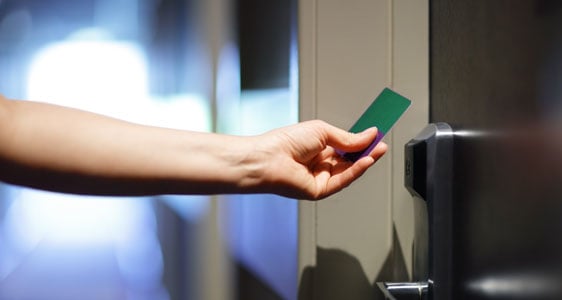
The concerns of the average college student today drastically differ from the college student of previous generations; not only do they have to worry about the expected stresses of college life, such as studying for exams, writing papers, or personal relationships, but also their safety and well-being due to the unfortunate reality that violent incidents commonly take place on college campuses throughout the nation. Safety precautions such as armed guards, increased communications strategies, and efficient awareness programs help students feel safe in an educational environment, but upgrading traditional access control technologies helps create safer spaces when these tragic events occur.
Traditionally, the responsibility of building access is primarily managed by the university’s facilities and public safety departments which ensure locks and keys are up to code and properly maintained, but typically pay less attention to the overall user experience of the students, staff, or faculty. For college campuses that continue to rely on mechanical keys for dormitories, the risks and liability associated with managing hundreds or thousands of keys entrusted to 18- to 19-year olds are far greater than campuses that have upgraded to a centralized and integrated IP-based access control system that requires one contactless ID card. Standard keys can cause a variety of headaches for building and facility managers:
- If a student loses their dorm room key, not only does the room’s lock need to be rekeyed, but so does the door for the floor’s entrance, sometimes requiring new keys to be issued to the rest of the students on the floor so they can still gain access to the hall.
- If that lost key is somehow duplicated before the hall locks are rekeyed, there would be a window of time where potential intruders with malicious intent could gain unauthorized access to the hall.
- Mechanical keys are just that: mechanical. There is no electronic signature when they are used on any given lock, resulting in the absence of an audit trail in case of a forensic investigation after an incident.
Meanwhile, when access control management is the responsibility of IT or housing departments, credential solutions tend to focus on more student-oriented approaches that are practical and convenient. Nearly all colleges and universities provide student IDs, so it is logical to place credential information within their magnetic stripe or RFID chip so students are able to gain access to any authorized buildings with ease. When credentials are easily manageable via a centralized server, prior hassles, such as waiting for students to return dorm room keys at the end of the school year, are virtually eliminated; by configuring certain parameters within the access system, administration is able to set access to specific rooms and/or halls to expire when the semester ends. Additionally, students’ ID cards can also be used as payment for on-campus laundry facilities, food courts, libraries, vending machines, ATMs, computer labs, and more. In some cases, a student may not need to carry anything but their school ID once everything is completely integrated to work across multiple systems.
Perhaps the only way to make access control across university and colleges campuses even more convenient would be to implement NFC-enabled smartphones in place of contactless proximity or smart ID cards, considering that the majority of young adults keep their phones within arm’s reach at all times. They are also less likely to accidentally forget their phone at home, lose it, or share it with a friend, slightly increasing the factor of security. However, expecting every student on a school campus to own a smartphone equipped with NFC technology is unrealistic; at this time, mobile-based access credentials are still in the testing phase, having been rolled out in pilot programs for only a handful of educational institutions. For the time being, replacing mechanical keys with proximity cards for access provide colleges and universities the best of both worlds regarding convenience and cost savings.
